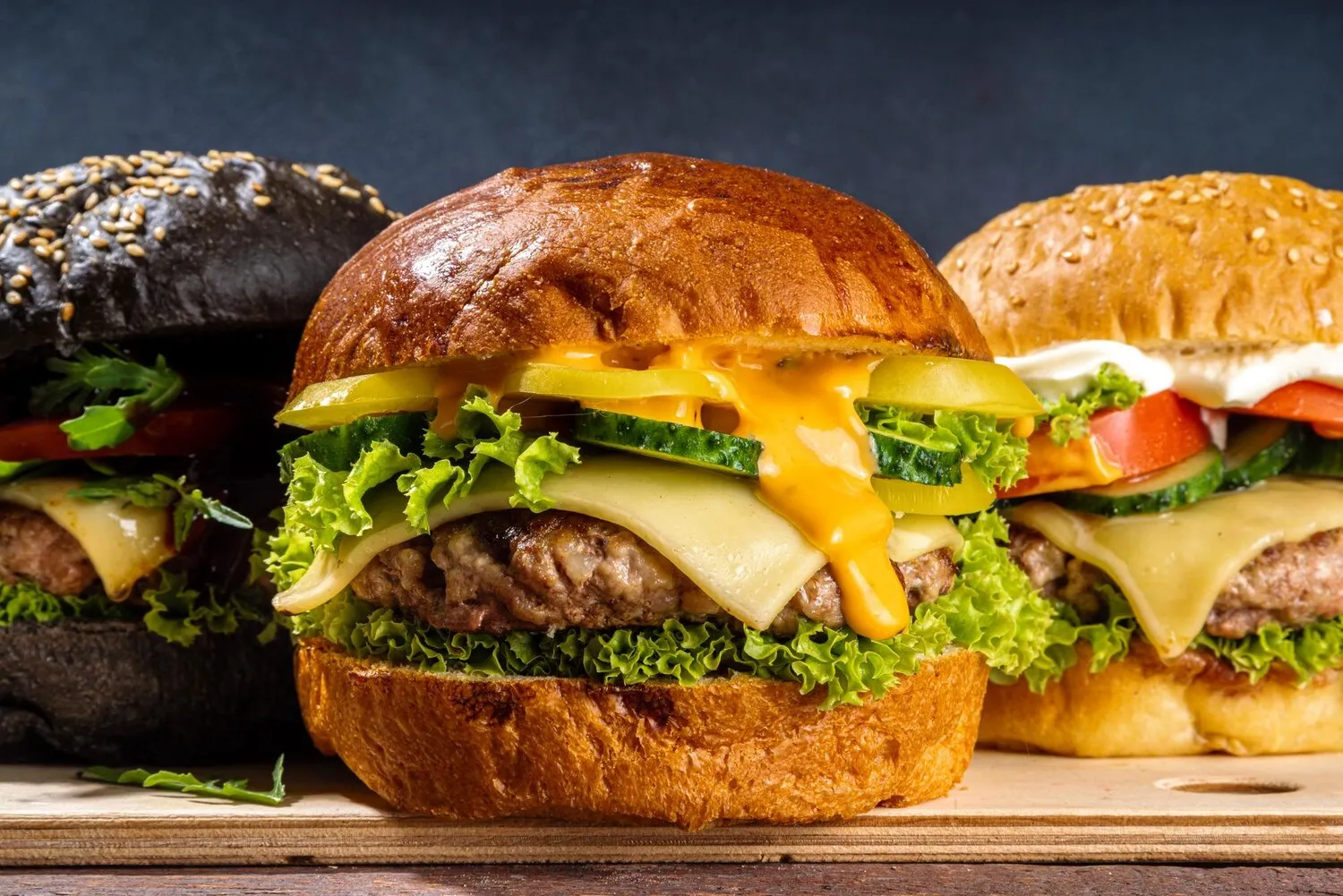
Vegetarian Burger
Vegetarian patty with various toppings.
Nutrition Facts
* The % Daily Value (DV) tells you how much a nutrient in a serving of food contributes to a daily diet. 2,000 calories a day is used for general nutrition advice.
The modern burger, a descendant of the German Hamburg steak, rose to prominence in the US in the late 19th and early 20th centuries. The vegetarian burger evolved later, in the mid to late 20th century, as a response to growing vegetarianism and the desire for meat-free alternatives to popular foods. Early versions often used ground nuts, vegetables, and grains pressed into a patty shape.
Vegetarian burgers reflect a growing awareness of health, environmental sustainability, and animal welfare within contemporary food culture. They are a symbol of dietary choice and a challenge to traditional meat-centric eating habits.
Dietary Alternatives
Vegetarian burgers offer a readily available and recognizable meat-free alternative to a classic fast-food item, catering to vegetarians, vegans, and those simply reducing meat consumption.
Innovation in Food Technology
The development of sophisticated vegetarian and vegan patties, including those mimicking the taste and texture of meat, represents advancements in food science and technology.
Health and Sustainability
Choosing a vegetarian burger is often associated with health benefits (lower cholesterol, higher fiber) and a smaller environmental footprint compared to beef burgers.
The flavors of a vegetarian burger are highly versatile and depend on the ingredients used in the patty and toppings. They can range from savory and earthy to sweet and spicy.
The primary flavor comes from the patty itself, which might be made of beans (black bean, kidney bean), lentils, vegetables (mushrooms, beets, carrots), grains (quinoa, brown rice), soy (tofu, tempeh), or a combination. These provide savory, earthy, and sometimes slightly sweet flavors. Toppings such as cheese, lettuce, tomato, onion, pickles, avocado, and various sauces (ketchup, mustard, mayonnaise, aioli, salsa) add layers of flavor and texture, contributing to a complex and satisfying taste experience. Spices like cumin, chili powder, garlic, and herbs (cilantro, parsley) are also often incorporated into the patty for enhanced flavor.
Patty Consistency
Achieving the right consistency for the patty is crucial. Use a binder like breadcrumbs, flaxseed meal, or chia seeds to prevent it from falling apart during cooking. Be careful not to overmix as this can result in a tough patty.
Flavor Combinations
Experiment with different flavor combinations in the patty. For example, black beans pair well with corn and southwest spices, while mushrooms benefit from thyme and garlic.
Cooking Methods
Vegetarian burgers can be cooked in various ways: pan-fried, baked, grilled, or air-fried. Adjust the cooking time and temperature based on the patty's ingredients and desired level of doneness. Avoid overcooking, as it can lead to a dry patty.
Toppings and Sauces
Complement the patty with fresh and flavorful toppings. Consider using unique sauces like pesto, chimichurri, or spicy mayo to elevate the overall taste.
Explore additional Burgers dishes and restaurants
Explore BurgersDiscover top dining spots and culinary experiences in Galway.
Explore GalwayLearn more about the food culture, restaurant scene, and culinary heritage of Ireland.
Explore Ireland